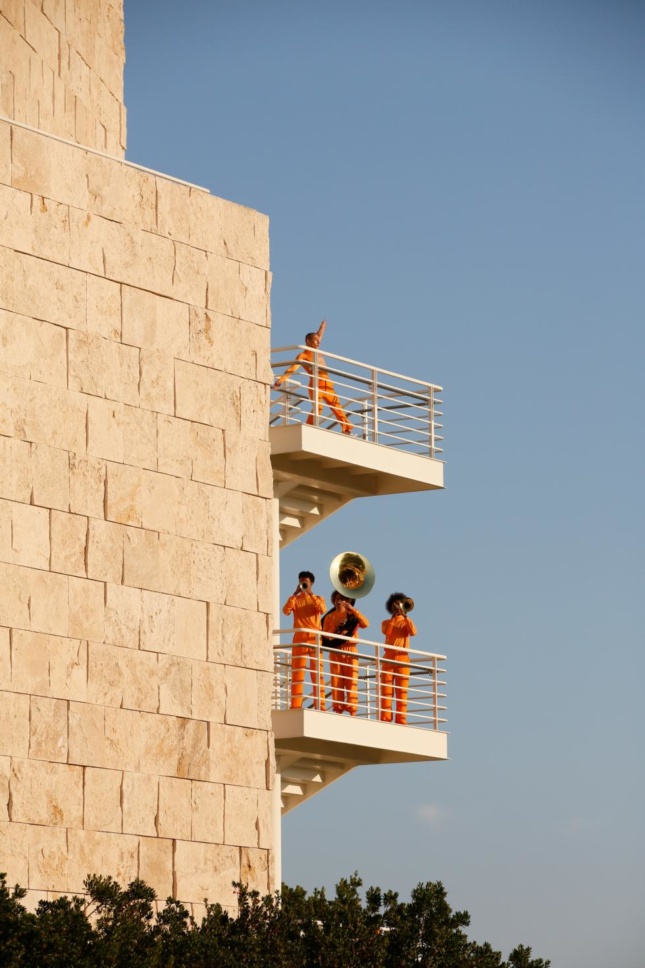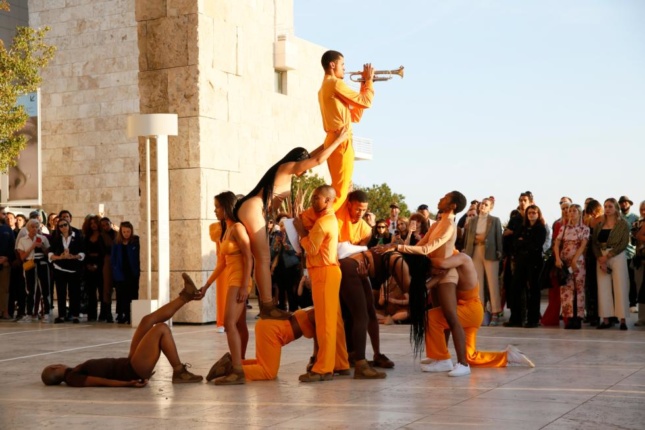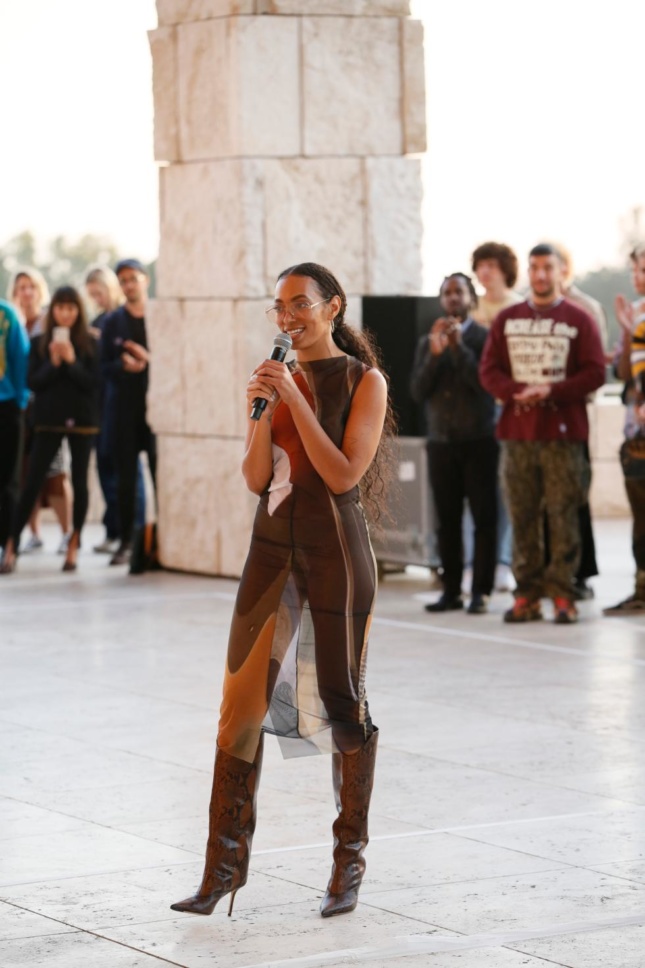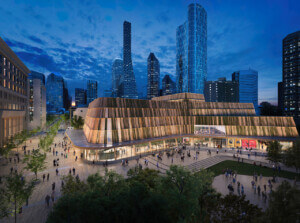The Getty Museum at golden hour was Solange Knowles’s chosen backdrop for Bridge-s, a site-specific movement piece where dancers, vocalists, and musicians harmonized with the Knowles’s jazz-inspired composition. The performance artwork was a collaboration between Solange and artists Gerard & Kelly (no strangers to art-architecture confluences), but Knowles was responsible for the entire musical score. It’s title, Counting, echoes of the theme of transience and time throughout the piece, a sharp juxtaposition with the seemingly indestructible architecture of the Richard Meier-designed Getty enveloping it.

Opened to the public on November 16, Bridge-s performers held crowds in a trance for the almost hour-long performance. The troupe, all dressed in a golden palette of marigold, brown, and orange, shimmered in the L.A. sunset. Solange described the abstract piece as a meditation on the natural cycles of space and time, held in tension with the human actor that moves, contorts, and changes through body and sound. The environmental context of Bridge-s, the Los Angeles hills and the materiality of the Getty, were as integral to the art piece as the choreography or the notes emanating from the horns, as it was the vessel in which her performance used physicality to interpret this theme.
So far Solange has had an excellent track record working with and responding to great architectures. She has staged similar interventions within the fabric of institutions including the Guggenheim and Hammer museums since the release of her critically acclaimed record, Don’t Touch My Hair. Invigorating the movements of her dancers through choreography that responds to the designed spaces that form their context, her ephemeral performances attest to her multi-disciplinary artistic aspirations. She forms new combinations with each project, centered around themes such as the black experience, Western aesthetics, and color theory.

Solange’s cast for Bridge-s was made up entirely of people of color, a continuation of her commitment to uplifting black artists through her work and collaborations from her earliest stints at video and performance art. The dancers’ movements were cyclic, weaving between gestures of intimacy and connection, but also prone to breaks. Often concentrated in the form of a duo, Gerard & Kelly’s choreography demonstrated the cruelty of disassociation—one piece of choreography shows a dancer stepping not over, but purposefully on the prostrate body of another on the ground. Other instances show the dancers moving more like a chorus, uniting as one body to lift up musicians mid-solo, or flowing into a throne to elevate specific movers high into the air. The bodies of her performers created new architectures by themselves as well as using every staircase, aperture, and platform available in the Getty courtyard.

Despite being the centerpiece of the Getty’s public program this weekend of speakers, film screenings, and performances, the closing words of Bridge-s were sharply self-conscious, reflecting on the importance as well as the futility of the built environment, and the Getty as host. Performers closed out the piece by robotically repeating a warning: “The house that was built could crumble at any time.”











